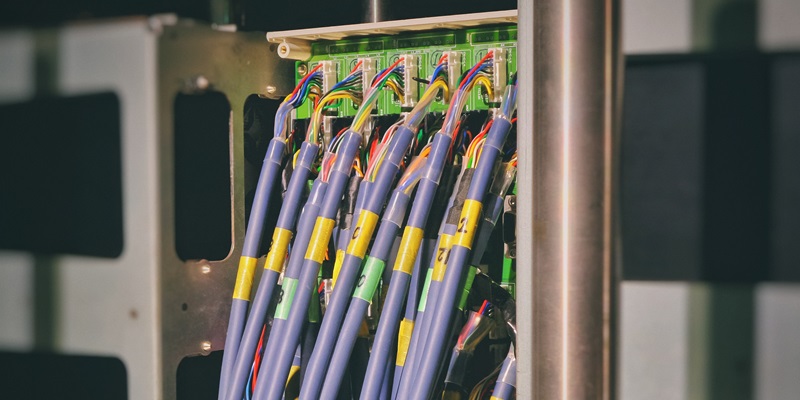In an increasingly interconnected world, digital connectivity has become a critical factor for economic growth, social development, and overall progress. Recognizing this, the European Union (EU) has been actively working towards its digital transformation, aiming to provide its citizens with seamless high-speed internet access. A key component of this transformation is the widespread deployment of optical fiber bundles, also known as fiber optic cables, which play a vital role in delivering fast and reliable internet connections.
Optical Fiber Bundles in the EU’s Digital Transformation
A key role in delivering high-speed internet is played by the deployment of optical fiber bundles. It is essential in the EU’s efforts to ensure that its citizens have access to high-speed internet. These fiber optic cables are thin strands made of glass or plastic that transmit data by converting it into pulses of light, enabling the swift transfer of information over long distances.
Definition and Function of Optical Fiber Bundles
Optical fiber bundles transmit data through the use of total internal reflection, wherein a light beam incident on the cable’s core is reflected back and forth until it reaches the other end. This efficient process avoids signal degradation, leading to faster and more reliable internet connections.
Faster and More Reliable Internet Connections
Unlike traditional copper cables, optical fiber bundles offer significantly higher data transmission speeds. They are capable of delivering gigabit and even terabit speeds, ensuring smooth browsing, speedy downloads, and seamless video streaming. The use of fiber optic cables helps meet the increasing demands of today’s digital world, providing a consistent and high-quality online experience.
Meeting the Demands of the Digital World
As technology advances and our reliance on online resources grows, the demand for faster and more reliable internet connections continues to increase. Optical fiber bundles possess the capacity to meet these demands, making them an ideal choice for supporting the EU’s digital transformation efforts.
Delivering Faster Internet Speeds to Urban and Rural Areas
The deployment of fiber optic cables across the EU enables both urban and rural areas to access high-speed internet connections. This inclusion helps bridge the digital divide, ensuring that citizens from all regions can enjoy the benefits of digital connectivity. In today’s digital age, access to high-speed internet is not just a luxury but a necessity. It opens up a world of opportunities for businesses, education, healthcare, and personal development. By making high-speed internet available to every EU citizen, optical fiber bundles help level the playing field and create equal opportunities for all.
Seamless Video Conferencing and Faster downloads/uploads
High-speed internet allows for uninterrupted video conferencing, enabling businesses to communicate effectively across borders or individuals to stay connected with loved ones. Additionally, it facilitates faster downloads and uploads of large files, boosting productivity and enhancing creativity.
Improved Streaming and Online Gaming
Optical fiber bundles enable smoother streaming of high-definition content, providing an enhanced entertainment experience. Gamers also benefit from reduced latency and improved responsiveness, making online gaming more enjoyable and competitive.
Enabling Emerging Technologies
High-speed internet is essential for the development and adoption of emerging technologies such as artificial intelligence, virtual reality, and the Internet of Things (IoT). These technologies have the potential to revolutionize various industries and enhance productivity, driving economic growth and innovation within the EU.
A Complex and Costly Endeavor
The deployment of optical fiber bundles on a large scale requires significant investments in infrastructure. The installation process involves meticulous planning and coordination, including digging trenches for underground cables or installing overhead lines, which can be complex and time-consuming.
Infrastructure Investments
Developing the necessary infrastructure to support the deployment of optical fiber bundles is also a considerable challenge. Investments in laying cables, establishing network hubs, and upgrading existing infrastructure are required to ensure widespread coverage and connectivity. Obtaining permits to lay optical fiber cables may prove challenging due to various regulatory regimes and environmental considerations. Existing infrastructure, such as buildings and roadways, may pose obstacles that need to be addressed during installation. Additionally, ensuring compatibility with different generations of technology and future developments must be taken into account.
Overcoming Challenges
Despite the challenges, the EU is committed to addressing the obstacles associated with optical fiber bundle deployment. Efforts are being made to streamline permitting processes, incentivize investments, and encourage collaboration among stakeholders to ensure efficient and effective implementation. The EU’s ambitious target is to provide access to gigabit internet speeds to at least 100 million households by 2025. This commitment signifies the EU’s determination to narrow the digital divide and make high-speed internet accessible to all citizens, fostering a digitally inclusive society.
The European Union is keenly aware of the importance of digital connectivity and has made significant strides in its digital transformation efforts. By deploying optical fiber bundles across the EU, governments and telecommunications companies can deliver faster internet speeds, bridging the digital divide and enabling equal opportunities for all citizens. High-speed internet is not only crucial for seamless video conferencing, faster downloads/uploads, and improved streaming and gaming experiences but also essential for unlocking the immense potential of emerging technologies. While the deployment of optical fiber bundles presents challenges, the EU remains committed to overcoming them, setting ambitious targets to ensure widespread access to gigabit internet speeds. Through this commitment, the EU aims to drive towards a future where fast and reliable internet connectivity is an integral part of every citizen’s life.

